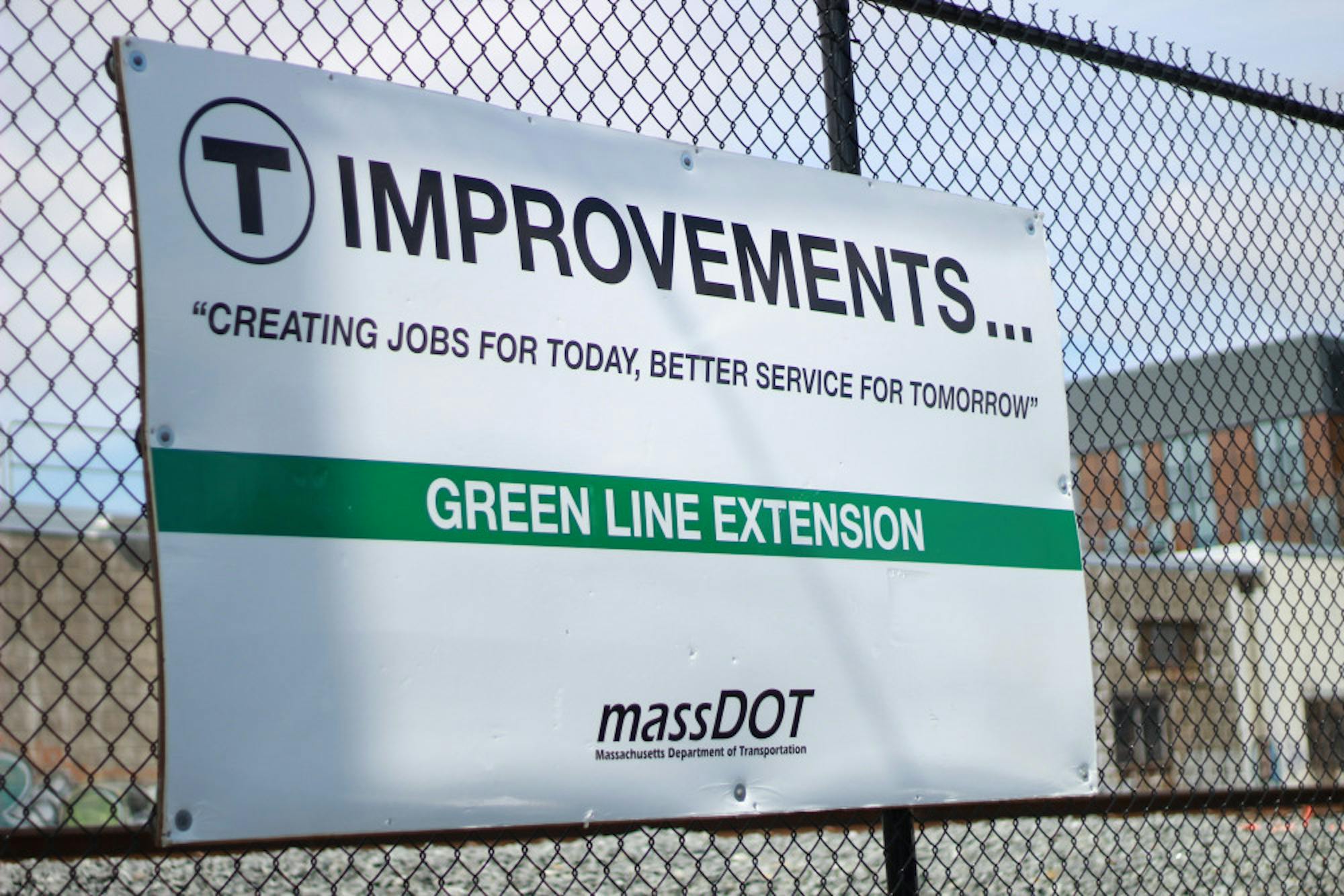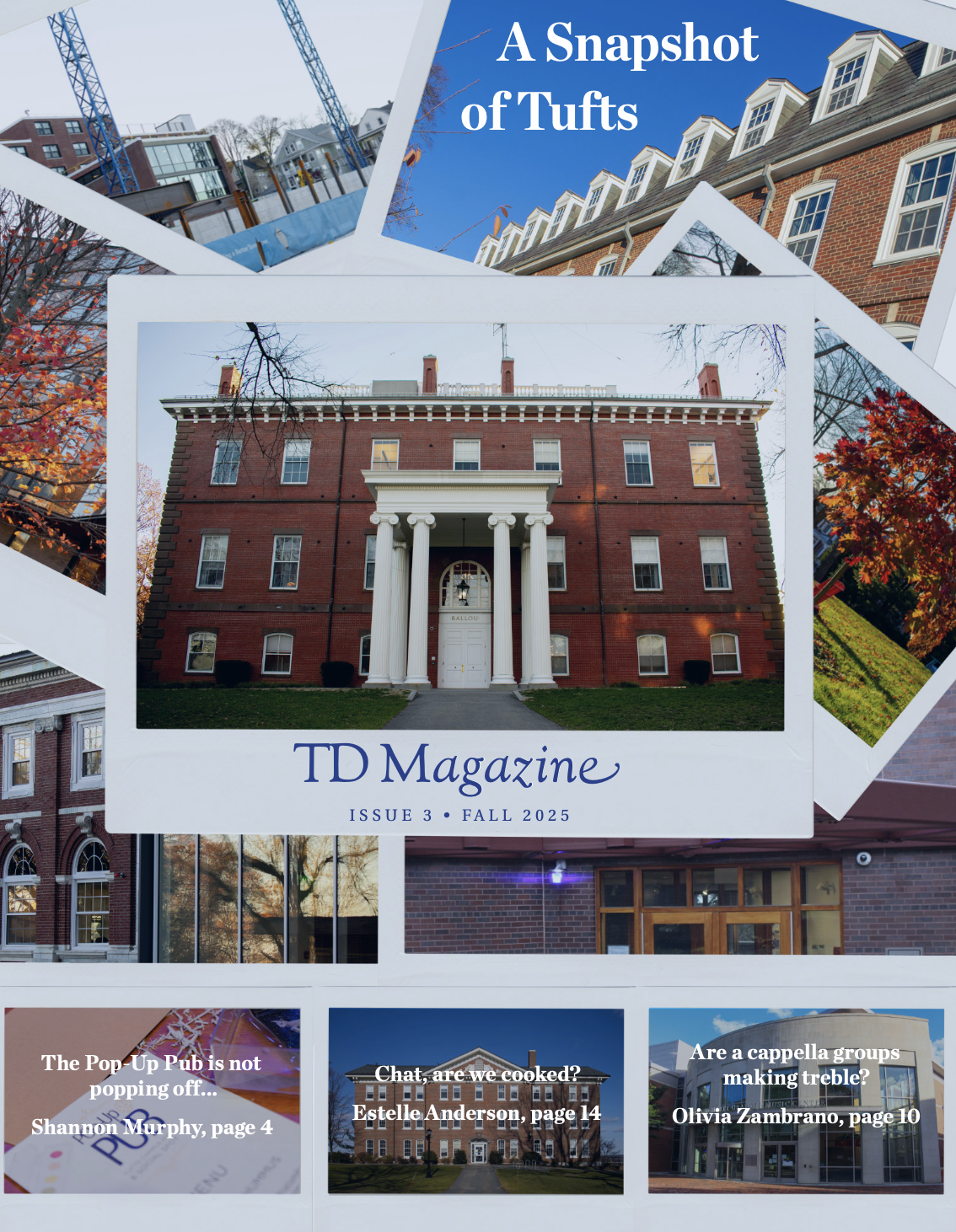Construction on the Massachusetts Bay Transportation Authority’s (MBTA)Green Line Extension (GLX) project has progressed this summer and is projected to finish on time despite growing concerns from state transportation officials about schedule pressures, according to GLXProgram Manager John Dalton, who is overseeing the $2.3 billion project.
At an MBTA Fiscal and Management Control Board meeting on August 12, the livestream of which is available on the MBTA website, Dalton provided an update on the GLX’s construction and emphasized to board members that the project was progressing according to schedule. However, Dalton admitted that certain internal, non-contractual targets embedded in the timeline of the GLX construction have not been met.
“Overall, the project is on time,” Dalton said at the meeting. “However, there are indicators now that remind us that there’s a lot to do in a short amount of time, and where we have recently seen internal milestones being pressured, we want to mitigate those as best [as] we can.”
A delayed track shift is generating the most concern among state transportation officials. According to Joe Pesaturo, director of communications at the MBTA, workers are currently relocating a set of existing commuter rail tracks in order to make way for the extended Green Line, which will run alongside the Fitchburg Commuter Rail Line and the Lowell Commuter Rail Line.
“In the fall, the commuter rail tracks are scheduled to be shifted back to the east side of the corridor into their permanent location, in order for work to continue on the west side of the project alignment,” Pesaturo told the Daily in an email.
The track shift was supposed to occur by the end of September. However, Dalton said at the meeting that they now hope to finish the shift before the winter season sets, citing schedule pressures.
“Count us as very worried,” Joseph Aiello, chair of the MBTA’s Fiscal and Management Control Board, said after Dalton’s presentation at the meeting. “We've got to get this job on schedule for the people who are waiting for the service as well as the larger context of what we're trying to achieve as an organization.”
Dalton attributed the schedule pressures to the project’s design-build structure as well as various unforeseen variables, such as contaminated soil and dirty groundwater at some of the worksites. He said that the project managers will take several measures to recover the lost time, including implementing longer work hours, accelerated design reviews and adding additional staffing and equipment resources.
According to the Daily,design-build projects distinguish themselves from most construction projects because a single team of designers and contractors work on the project together, rather than independently. The design-build nature of the GLX means that cities and the MBTA only know what new construction must take place a few weeks in advance.
Despite schedule pressures, Dalton was optimistic about the project finishing on time.
“The fact that we are two years away from being done with this project means there is time to recover,” Dalton said at a press conference following the meeting, according to the Boston Globe.
Passenger service on the route is scheduled to begin in December 2021.
The new GLX tracks will extend from Lechmere Station into the Medford and Somerville communities in two branches. According to Rocco DiRico, director of government and community relations at Tufts, the Medford branch of the extension will add a stop at the intersection of College Avenue and Boston Avenue. He said that it will ultimately connect three of Tufts’ campuses, including its main campus in Medford/Somerville, the Tufts Health Sciences campus in Chinatown, and the School of the Museum of Fine Arts at Tufts in Fenway.
“The GLX will be a tremendous benefit to Tufts University, Medford, Somerville, and the entire region,” DiRico told the Daily in an email. “It will allow our students, faculty, and staff to easily travel between the campuses.”
However, Tufts students and members of the Somerville and Medford communities have continued to express concerns about the project.
Medford and Somerville residents worry that the GLX will increase area housing prices, potentially displacing many low- and middle-income residents. A 2014 report by the Metropolitan Area Planning Council, a regional planning agency, projected that rents near the planned GLX stations could rise by as much as 67% as GLX construction is completed.
“It’s really ironic that the whole purpose of bringing the Green Line to Somerville was to right a historical wrong,” Somerville Ward 3 Councilor Ben Ewen-Campen said. “Historically, this is a low-income population that suffered from having highways come through the city instead of having high-quality public transportation. And now when we’re getting it, I think a lot of the folks who it was meant for have been displaced already.”
Ewen-Campen applauded the amount of community organizing that has taken place in Somerville over the last several years to ensure that residents win community benefits that coincide with the GLX’s development. Most recently, he said, the Union Square NeighborhoodCouncil and developers for the area surrounding the upcoming Union Square Green Line station reached a community benefits agreement, which includes additional affordable housing being built up front.
Additionally, Ewen-Campen said that he is continuing to work with community members to develop an affordable housing plan that will keep housing costs low and stable as GLX construction continues. He said that the implementation of community land trusts, in which nonprofits comprised of community members acquire land with the stated goal of creating and preserving affordable housing, has drawn an enormous amount of interest from Somerville residents.
“It’s a new model for treating land, not just as a way for developers and real estate professionals to get rich, but to create affordable housing to keep our community diverse and vibrant,” Ewen-Campen said.
DiRico acknowledged the additional burden that rent increases would place on theroughly 37% of Tufts undergraduates who live off-campus. He said that Tufts has continued to expand its on-campus housing options, through methods like bed optimization, the Community Housing project and the renovation of Miller Hall and Houston Hall, in order to compensate for rising rents and a lack of affordable housing in the areas surrounding campus.
“In anticipation of the GLX, Tufts University has made a considerable effort to add more than 435 student beds in the past three years — the equivalent of more than two dorms,” DiRico said. “In doing so, Tufts has been able to add beds in an efficient and cost effective manner.”
Community members have also expressed concerns about the accessibility of the upcoming stops along the GLX. According to Ewen-Campen, Somerville City Council and activists had to fight for improved accessibility to be included in the construction of Union Square’s Green Line station. He also said that there are currently no plans in place for the station near Somerville’s City Hall to include an elevator, which, according to Ewen-Campen, renders the stop completely unusable for people in wheelchairs.
“To varying degrees, there are serious accessibility issues at every station,” he said. “It’s really frustrating to be getting off on the wrong foot for the most vulnerable people in the community.”
Ultimately, Ewen-Campen affirmed his full support for the GLX project and increased investment in public transportation but emphasized the need for careful planning in order to prevent further displacement.
“There’s no question that the Green Line Extension is going to transform the area,” Ewen-Campen said. “I think the role of the community and the city government at this point is to make sure that the benefits are shared equally — as much as possible.”
Community members have also expressed concerns over the closing of the Broadway Bridge in Ball Square, which has not been operational since March 22 due to ongoing GLX construction. Some worry that the closure, among other detours in the area, has contributed to increased congestion around Medford and Somerville as well as delays traveling to and from Boston.
“As part of construction, the GLX had to close multiple bridges in Somerville this year, which has led to detours and increased traffic in Medford and Somerville,” DiRico said. “While these temporary closures can be frustrating, the GLX should help alleviate traffic congestion in the area, take cars off the road and improve air quality for years to come.”
Overall, though, DiRico expressed that the long-term benefits of the GLX outweigh the short-term costs.
“The GLX project has strengthened our relationship with Medford, Somerville, and the MBTA,” DiRico said. “Now that construction is underway, we are working very closely with both cities, our neighbors, and the MBTA to ensure that the Medford/Tufts station is designed to meet the needs of our students, faculty, staff, neighbors, and visitors.”
Construction on Green Line Extension progresses amid schedule pressures, community concerns

A sign promoting the MBTA Green Line Extension Project is pictured on April 17, 2018.





